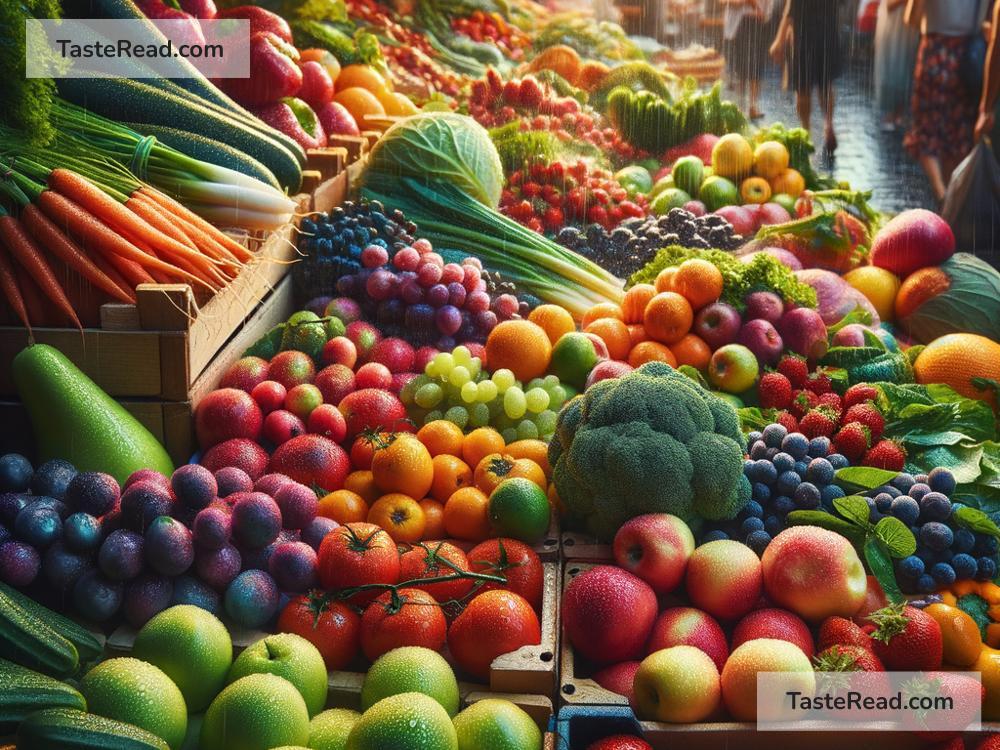The Impact of Rainfall on the Taste of Fruits and Vegetables
Rainfall is an essential part of nature. It helps plants grow, fills up rivers and lakes, and keeps the earth green and healthy. But did you know that rainfall can also affect the taste of fruits and vegetables? That’s right! The amount of rain a plant receives during its growth can influence how sweet, sour, or flavorful it becomes. In this article, we will explore how rainfall impacts the taste of fruits and vegetables, and why it matters for farmers, consumers, and the environment.
Why is Rainfall Important for Plants?
Rainfall provides water, which is crucial for plants to grow. Water helps transport nutrients from the soil to the plant, keeping it healthy and strong. Rainfall also plays a role in photosynthesis, the process where plants make their own food using sunlight, water, and carbon dioxide. Without enough water, plants struggle to grow, and the quality of fruits and vegetables they produce often suffers.
However, while rainfall is generally good for plants, too much or too little rain can cause problems. If there’s heavy rainfall, the soil can become flooded, and the roots of plants may not be able to get enough oxygen. This can harm the plant and affect its growth. On the other hand, if there’s little or no rain, plants can become dehydrated and stressed, leading to smaller fruits and vegetables that may lack flavor.
How Does Rainfall Affect Taste?
The taste of fruits and vegetables is influenced by several factors, such as the type of plant, the soil quality, and the weather conditions—rainfall being one of the most important. Rainfall affects taste in two main ways: by changing the balance of nutrients and sugars in the plant and by altering the plant’s overall health.
- Nutrients and Sugars
Fruits and vegetables get their nutrients from the soil, which are dissolved in water and absorbed by the plant’s roots. These nutrients contribute to the plant’s growth and the development of flavors. For example, phosphorus helps fruits and vegetables become sweeter, while potassium enhances their overall flavor.
When there’s just the right amount of rain, plants can absorb the nutrients they need, which leads to tasty and flavorful produce. But if there’s too much rain, nutrients can get washed out of the soil before the plants can absorb them. This can make fruits and vegetables taste bland or less flavorful. Similarly, in drought conditions, plants don’t get enough water, and this can cause them to overproduce sugars to survive, sometimes resulting in overly sweet produce.
- Plant Health
Rainfall also affects the health of the plant, which ultimately impacts its ability to produce quality fruits and vegetables. When plants are stressed due to too much or too little rain, their growth slows down, and they may produce smaller fruits and vegetables. In some cases, stress can even lead to a bitter or unpleasant taste.
For example, tomatoes are known to be sensitive to water levels. If a tomato plant gets inconsistent rainfall—too much in one week and none the next—the fruits may develop cracks and become less flavorful. Similarly, leafy greens like spinach or lettuce can develop a bitter taste if they grow under poor rainfall conditions.
Seasonal Changes and Rainfall Patterns
Different fruits and vegetables grow during different seasons, and the amount of rainfall varies from one season to another. This means that the weather plays a big role in determining the taste of produce throughout the year.
In seasons with moderate rainfall, fruits and vegetables tend to grow well and taste great. For instance, apples grown in regions with steady rain are often juicy and sweet. But in dry seasons or areas that experience drought, crops can suffer, and their taste may change. Some farmers use irrigation systems to water their crops during dry spells, but even this doesn’t always replicate the natural balance provided by rainfall.
Why Does This Matter?
For farmers, understanding the impact of rainfall on the taste of their crops is essential for growing high-quality produce. When the weather doesn’t cooperate, many farmers face challenges in producing fruits and vegetables that taste the way consumers expect. As rainfall patterns become less predictable due to climate change, farmers are having to adapt and find new ways to manage their crops.
For consumers, the taste of fruits and vegetables plays a significant role in their choices. People tend to prefer sweet, flavorful produce, which is often associated with good growing conditions. When rainfall is insufficient or excessive, it can lead to changes in taste and appearance, which might discourage people from buying certain fruits or vegetables.
Conclusion
Rainfall is a vital factor in determining the taste of fruits and vegetables. The right amount of rain helps plants grow well, absorb nutrients, and produce flavorful fruits and vegetables. But when there’s too much or too little rain, it can negatively impact the taste and quality of produce. As climate patterns shift, farmers and researchers are working together to find solutions to ensure that our fruits and vegetables continue to taste delicious despite changing rainfall conditions.
Next time you bite into a sweet strawberry or a crisp carrot, take a moment to appreciate how the weather may have contributed to its flavor. Rainfall is more than just water falling from the sky—it’s a key ingredient in the food we enjoy every day!


